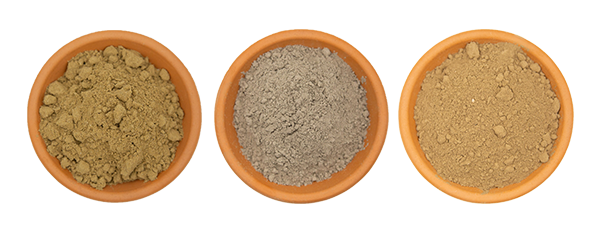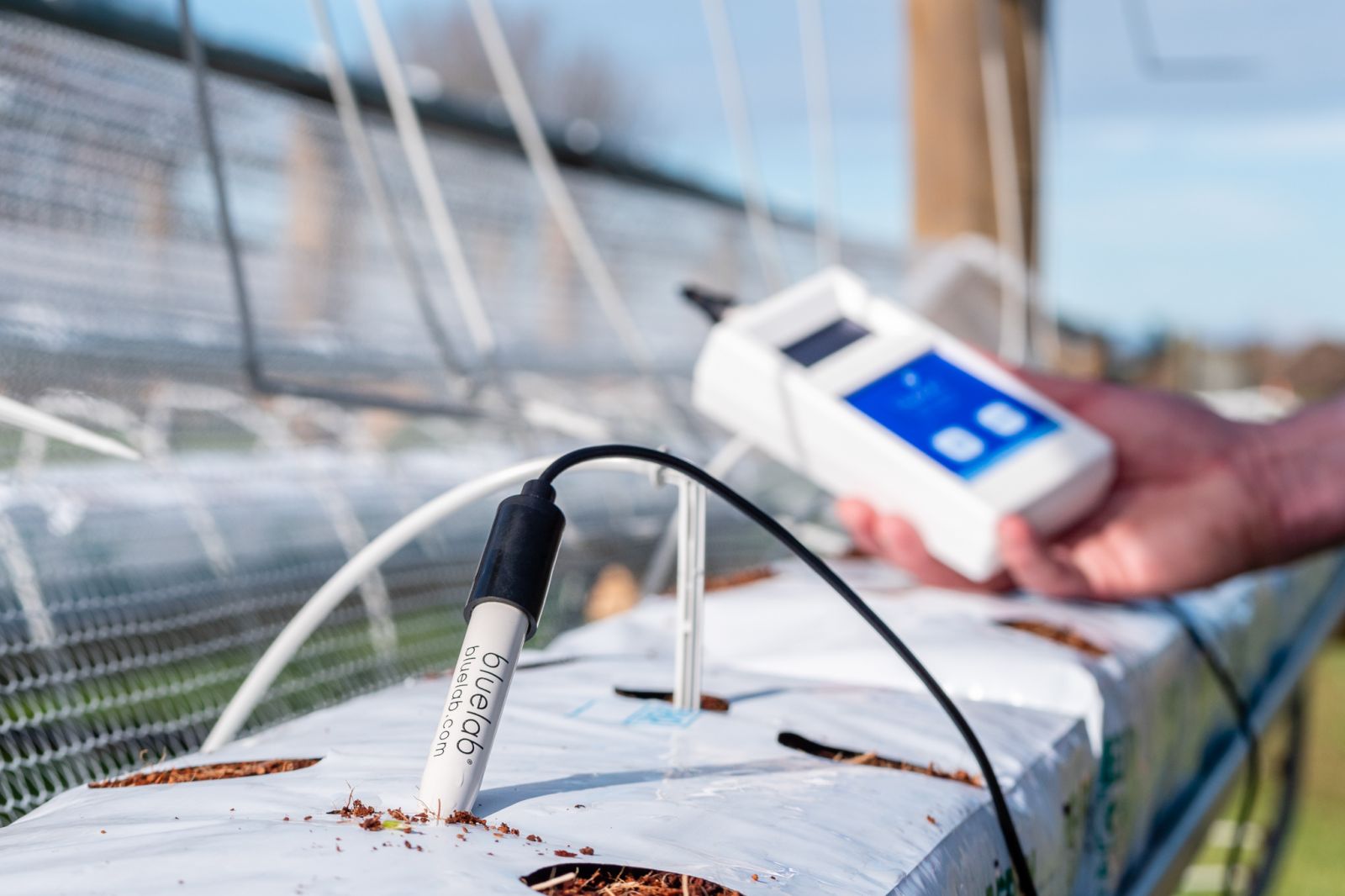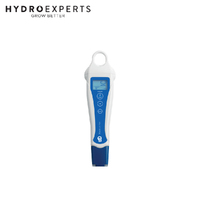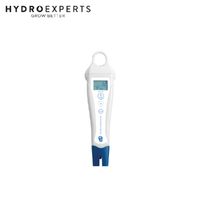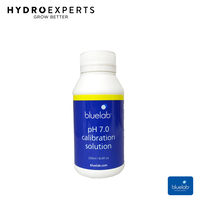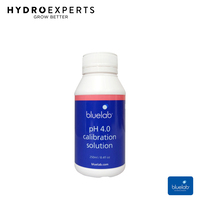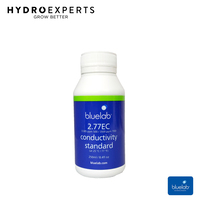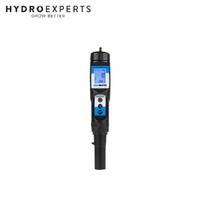The Ultimate Guide to pH and EC Pen Calibration and Maintenance in Australia
By Hydro Experts | 25 June 2025
Whether you're managing a hydroponic garden, monitoring a swimming pool, brewing craft beer, or ensuring food safety, accurate pH and electrical conductivity (EC) measurements are crucial. In Australia's diverse climate conditions, from the tropical north to the temperate south, proper calibration and maintenance of your testing equipment isn't just good practice—it's essential for success.
This guide will walk you through everything you need to know about keeping your pH and EC pens in top working condition, ensuring reliability when it matters most.
Understanding pH and EC Measurement in Australia
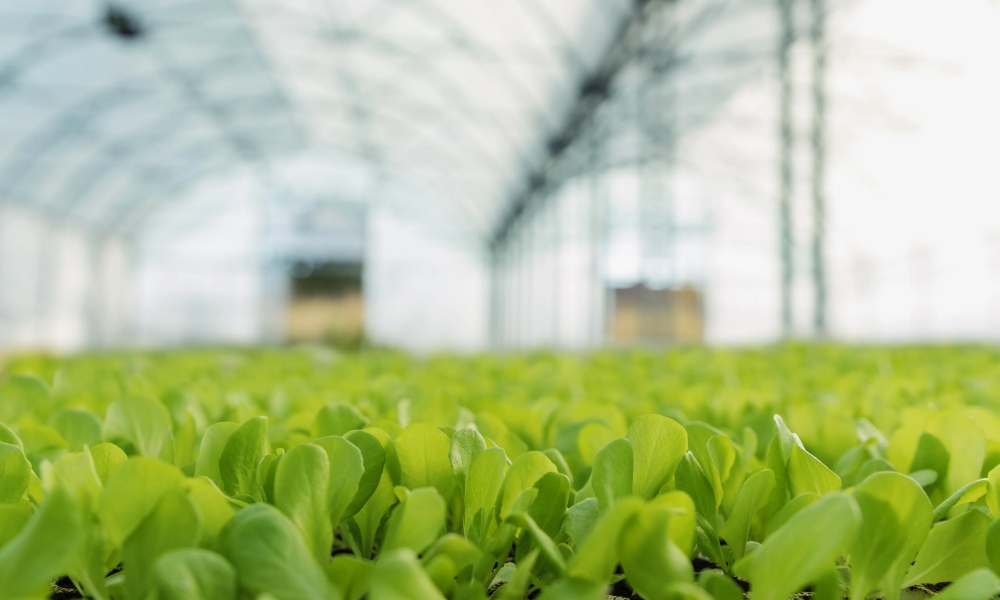
Before diving into calibration procedures, let's quickly review why these measurements matter in the Australian context.
Australia's water quality varies significantly across regions. Municipal water in major cities like Sydney and Melbourne typically has a pH between 6.5 and 8.5, while rural areas may experience different ranges depending on local geology. For rainwater tanks, a common fixture in Australian homes, pH levels can be slightly acidic, especially in areas with higher air pollution.
EC (Electrical Conductivity) measures the water's ability to conduct electricity, which directly correlates to the concentration of dissolved salts. In Australia, this measurement is particularly important given our issues with salinity in many agricultural regions and the prevalence of hard water in certain areas.
For these reasons, reliable measurement tools are not a luxury—they're a necessity for many Australians.
pH Pen Calibration: Step-by-Step Process
Proper calibration ensures your pH pen provides accurate readings. Here's how to do it correctly:
Preparation
Before calibration, gather these essentials:
- Your pH pen
- Calibration solutions (typically pH 4.0, 7.0, and 10.0)
- Distilled water (not tap water, which can contain minerals that affect readings)
- Clean tissue or lint-free cloth
- Small containers for calibration solutions
Most quality brands like Bluelab, Aqua Master, and Horiba provide calibration solutions with their devices, but you can purchase them separately from hydroponic shops or scientific suppliers throughout Australia.
Pre-Calibration Care
First, inspect your pH pen's electrode. It should be clean and free from deposits. If you notice any build-up, perform a cleaning procedure (detailed later in this article) before calibration.
Ensure your calibration solutions are at room temperature—ideally between 20-25°C. Temperature extremes can affect calibration accuracy, which is particularly relevant in Australia's hotter regions.
Calibration Process
For most pH pens, calibration involves these steps:
- Remove the protective cap from your pH pen electrode.
- Rinse the electrode with distilled water and gently blot dry with a tissue (don't wipe, as this can create static).
- Turn on the pen and place the electrode in a pH 7.0 solution.
- Wait for the reading to stabilise (typically 1-2 minutes).
- Press the calibration button (refer to your specific model's instructions).
- Rinse the electrode again with distilled water and blot dry.
- Repeat the process with a pH 4.0 solution for acidic range calibration.
- For full-range calibration, perform a third calibration with a pH 10.0 solution.
Bluelab's pH pens, commonly used in Australian hydroponic setups, you'll typically hold the "Cal" button until the display shows CAL, then proceed with the solutions.
Aqua Master's pH pens, popular for pool testing in Australia, often require you to press the "Mode" button to enter calibration mode before using the calibration solutions.
Horiba Instruments' products favoured in food production and professional settings generally have a dedicated calibration mode accessed through their menu system.
Verification
After calibration, verify your pen's accuracy by testing a solution with a known pH value. Most quality pH pens should provide readings within ±0.1 pH units of the actual value.
Maintaining Your pH Pen for Longevity
The harsh Australian climate and water conditions can be tough on electronic testing equipment. Here's how to keep your pH pen working properly:
Proper Storage
Never let your pH pen's electrode dry out. Most electrodes should be stored with the protective cap filled with storage solution or, at minimum, tap water. This is particularly important in Australia's drier regions where evaporation happens quickly.
For Bluelab pens, their KCl storage solution is recommended. Horiba pens often come with a specific storage solution, while Aqua Master users can typically use their pH 4.0 solution if a dedicated storage solution isn't available.
Regular Cleaning
Australian water conditions, particularly in hard water areas like Perth and Adelaide, can accelerate electrode fouling. Clean your pH pen regularly:
- For general cleaning: Rinse with distilled water after each use.
- For protein deposits (common in brewing applications): Soak the electrode in a cleaning solution containing pepsin and HCl for 15 minutes.
- For mineral deposits: Soak in 0.1M HCl solution for 10 minutes.
- For oil/grease deposits (common in food testing): Use a mild detergent solution followed by thorough rinsing.
Most brands offer specific cleaning solutions. For example, Bluelab's pH probe cleaner is designed to remove contaminants without damaging the sensitive electrode.
Avoiding Common Mistakes
- Don't touch the electrode bulb with your fingers
- Never store the electrode dry
- Avoid testing extremely hot liquids that exceed your pen's temperature compensation range
- Don't use expired calibration solutions (check the dates—heat can accelerate expiration in Australian conditions)
- Don't immerse the entire pen body in water (unless specified waterproof)
EC Pen Calibration: Getting It Right
EC (Electrical Conductivity) pens measure dissolved solids in your water, crucial for hydroponics, aquaculture, and brewing in Australia.
Preparation
Similar to pH calibration, you'll need:
- Your EC pen
- EC calibration solution (typically 1.41 mS/cm or 2.76 mS/cm)
- Distilled water
- Clean tissue
- Small containers
In Australia, you can find quality EC calibration solutions from major hydroponic suppliers in capital cities or online retailers.
Calibration Process
The general process for EC pen calibration:
- Rinse the EC probe with distilled water and blot dry.
- Turn on the meter and place it in the calibration solution.
- Allow the reading to stabilise.
- Adjust the calibration according to your specific model's instructions.
For Bluelab
EC pens, widely used in Australian hydroponics, you'll typically hold the calibration button until the display flashes, then wait for confirmation.
Aqua Master Tools
EC pens often require you to use the "Cal" or "Mode" button to enter calibration mode before adjusting to match the solution value.
Horiba Instruments
EC meters generally have a more sophisticated calibration procedure through their menu system, which allows for multi-point calibration.
Temperature Considerations
EC readings are temperature-dependent, and this is particularly relevant in Australia's varied climate. Quality EC pens include automatic temperature compensation (ATC), but verify your meter's specified temperature range.
Most EC meters are designed to provide accurate readings between 15-30°C, which covers most Australian conditions. However, in extreme heat or cold, allow your solutions to come to room temperature before calibration.
Troubleshooting Common Issues
Even with proper maintenance, issues can arise. Here are solutions for common problems:
Unstable or Drifting Readings
This often indicates:
- An aging electrode requiring replacement
- Air bubbles trapped near the electrode (gently tap to release)
- Contaminated electrode (perform a thorough cleaning)
- Low battery (replace as needed)
Slow Response Time
If your pen is sluggish to stabilise:
- The electrode might need cleaning
- The junction may be clogged (follow the manufacturer's instructions for unclogging)
- The electrode might be reaching the end of its lifespan
Cannot calibrate
If calibration fails:
- Check that you're using fresh calibration solutions
- Ensure the electrode is properly cleaned
- Verify your technique matches the manufacturer's instructions
- Consider that the electrode might need replacement
For Bluelab users experiencing calibration issues, their customer service through Australian distributors is quite responsive. Aqua Master and Horiba both have Australian technical support available for troubleshooting assistance.
Australian Water Considerations
Australia's unique water conditions present specific challenges:
Hard Water Regions
In areas like Adelaide and Perth with harder water, mineral build-up on electrodes occurs more rapidly. Users in these regions should clean their electrodes more frequently and be vigilant for signs of mineral scaling.
Rainwater Users
Many Australian rural properties rely on rainwater collection. Rainwater typically has lower mineral content (low EC) and can be slightly acidic. This means calibration is especially important for accurate readings in these conditions.
Coastal Considerations
Properties near Australia's extensive coastline may experience salt spray contamination in their water sources, affecting EC readings. Regular calibration helps ensure these variations don't compromise your measurements.
When to Replace Your pH or EC Pen
Quality equipment from brands like Bluelab, Aqua Master, and Horiba should last several years with proper care. However, electrodes do have a finite lifespan. Consider replacement when:
- Calibration becomes impossible or extremely difficult
- Readings remain unstable despite proper cleaning and maintenance
- Response time becomes excessively slow
- Physical damage to the electrode is visible
- The unit is more than 2-3 years old and showing signs of degradation
Most Australian distributors offer replacement electrodes for quality brands, extending the life of your investment rather than requiring complete replacement.
Conclusion
Proper calibration and maintenance of your pH and EC pens isn't just about protecting your investment—it's about ensuring reliable data for your hydroponics system, brewing operation, pool chemistry, or food safety protocols.
In Australia's diverse environments, from tropical Queensland to temperate Victoria, these instruments face unique challenges that make regular care essential. By following these calibration procedures and maintenance tips, you'll extend the life of your equipment and maintain confidence in your measurements.
Remember that quality brands like Bluelab, Aqua Master, and Horiba provide detailed instructions specific to their models. Always refer to your manufacturer's guidelines as the definitive resource for your particular instrument.
With proper care, your pH and EC pens will provide years of reliable service, helping you achieve optimal results in whatever application you pursue.
Calibrate your pH pen weekly and EC pen every 2-3 weeks, or before critical measurements.
No, always use distilled water to avoid mineral contamination.
Australia’s hard or acidic water can cause faster electrode fouling, requiring more frequent calibration and cleaning.
Replace if readings are unstable, calibration fails, or the pen is over 2-3 years old.
Yes, these brands are reliable and designed for Australia’s diverse climates and water conditions.

